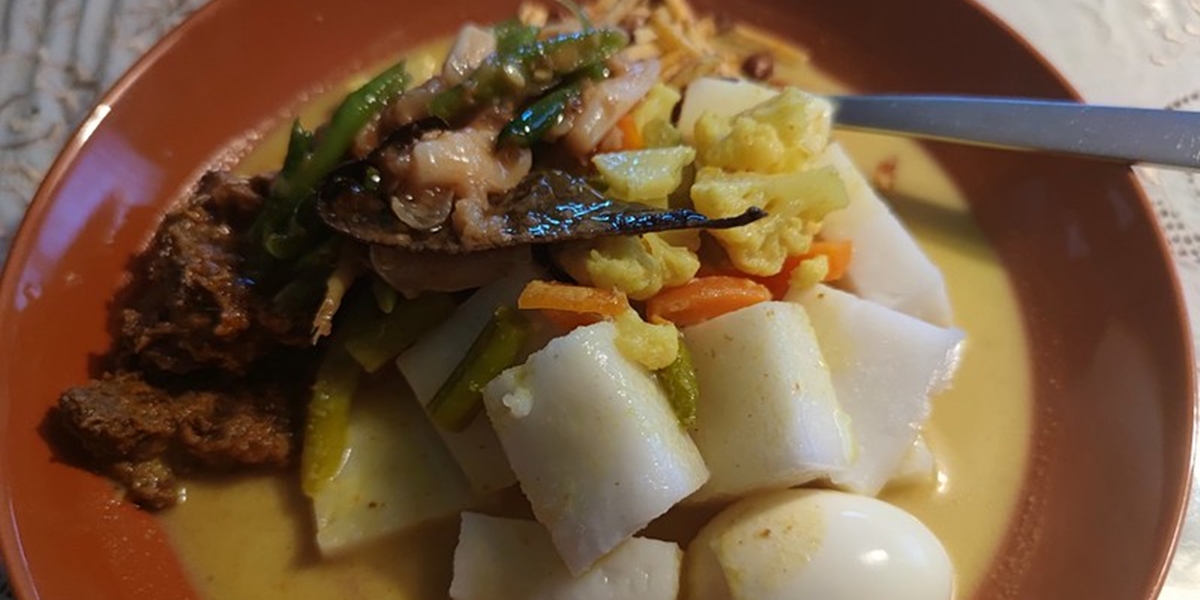Overcoming Mental Fatigue After Eid: Tips to Restore Energy After Meeting Many People
Discover effective ways to overcome mental fatigue after interacting with many people during Eid.

Kapanlagi.com - Eid in Betawi is not only synonymous with ketupat and beef stew, but also with special dishes rich in history and flavor. One dish that always graces the dining table during the holiday is sayur godog, a traditional Betawi cuisine with a savory coconut milk broth and unique ingredients like young papaya, pete, and tempeh.
Sayur godog is not just food, but also a part of the culture and traditions that have been passed down through generations. This dish is not only found during Eid but also at various Betawi cultural events such as nuju bulan, weddings, and Nisfu Sya'ban. In fact, since 2021, sayur godog has been designated as an Intangible Cultural Heritage of Indonesia by the DKI Jakarta Provincial Government.
What is the origin of sayur godog, and what role does it play in traditional Betawi cuisine? Here’s a complete explanation.
Quoting the Jakita magazine managed by the Jakarta provincial government, sayur godog has been a part of Betawi cuisine for hundreds of years, but its origins cannot be separated from the influence of Chinese and Peranakan cultures. This dish bears similarities to lontong Cap Go Meh, a Chinese specialty that also uses coconut milk broth and various fillings.
In the past, many Chinese communities living in Batavia (Jakarta) mingled with the local population, leading to the creation of culinary acculturation, including in sayur godog. With a combination of ingredients such as young papaya, petai, and large red chili, sayur godog eventually evolved into a signature dish that is synonymous with the Betawi people.
Moreover, in its history, sayur godog also has influences from India. In the past, traders entering Batavia engaged in social interactions, including introducing their culinary culture to the Betawi people. From there, sayur godog underwent modifications with its own distinctive characteristics, such as the use of stronger spice blends and the addition of petai to enrich the aroma and flavor of this dish.
Godog vegetables have a distinctive flavor due to the use of selected spices and ingredients that create a blend of savory, spicy, and slightly sweet tastes. Some of the main ingredients in godog vegetables include:
The Betawi community has a tradition of serving vegetable stew on the first day of Eid, usually accompanied by ketupat, beef stew, and fried liver sambal.
In addition to Eid al-Fitr, this dish also often appears at various Betawi cultural events. For instance, during a pregnancy celebration, vegetable stew is served with ketupat as a form of gratitude for someone's pregnancy. Similarly, during tahlilan and memorial services, vegetable stew often becomes a mandatory dish.
Vegetable stew also has a philosophical meaning, where the combination of various ingredients in one dish symbolizes diversity and togetherness in the Betawi community.
Although it seems simple, cooking vegetable stew requires patience and the right cooking techniques to achieve an authentic flavor. Here are the steps to cook it:
Preparing the ingredients
Cooking method
In 2021, the DKI Jakarta Provincial Government designated godog vegetables as an Intangible Cultural Heritage of Indonesia. This designation was made to preserve the existence of the distinctive Betawi cuisine so that it remains known and passed down to future generations.
This step also aims to elevate traditional cuisine to a broader level, including incorporating it into the local content of school curricula, so that Betawi children become more familiar with the typical foods of their region.
Although many modern foods are now present on the Eid table, godog vegetables remain an indispensable mandatory menu for the Betawi community. Their existence is not just about taste, but also about cultural identity and culinary history that must be preserved.
(kpl/frr)
Cobain For You Page (FYP) Yang kamu suka ada di sini,
lihat isinya
Discover effective ways to overcome mental fatigue after interacting with many people during Eid.
Rianti Cartwright, an actress and presenter, looks enchanting on every occasion, even though she is now 40 years old.
Mahalini, a talented singer, always captivates the audience with her graceful and charming stage style.
Anya Geraldine appears fashionable and sporty in various sports activities, with combinations that attract attention.
Andrea Dian appears fashionable in comfortable and stylish gym outfits, ready to motivate us to exercise.
Chelsea Olivia and Gleen Alinsky always appear harmonious and far from gossip. Check out their moments together.
Discover 10 exciting games that can warm up the Eid atmosphere with family members of all ages.
Andrea Dian and Ganindra Bimo always appear united in their exciting moments, from Europe to vacations.
Enzy Storia appears fashionable in various moments with diverse and interesting OOTD styles.
Going home for Eid to Sumedang? Don't forget to grab 10 of its unique snacks, from the soft Tahu Sumedang to the sweet Salak Bongkok!
Vior without makeup who remains beautifully enchanting.
Syifa Hadju dazzles with her chic and stylish casual style on various occasions.